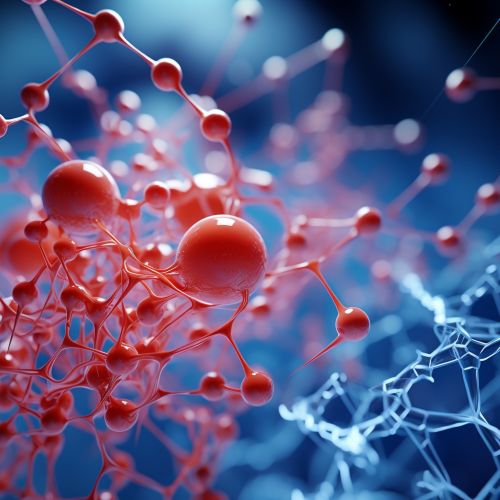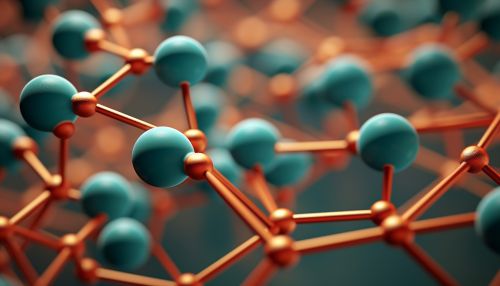Motor protein
Introduction
Motor proteins are a class of molecular motors that can move along the surface of suitable substrates. They convert chemical energy into mechanical work by the hydrolysis of ATP. This class of proteins is responsible for various types of movements, including intracellular transport, cell motility, and muscle contraction.
Structure and Function
Motor proteins are composed of three main parts: a head, a hinge, and a tail. The head is the motor domain that binds ATP and generates force. The hinge allows the head and tail to move relative to each other. The tail binds to the cargo that the motor protein transports.


The function of motor proteins is to convert chemical energy, stored in the form of ATP, into mechanical work. This conversion is achieved through a cycle of conformational changes in the protein structure, driven by the hydrolysis of ATP. The mechanical work produced by motor proteins is used for a variety of cellular functions, including the transport of vesicles, organelles, and proteins within cells, the contraction of muscle fibers, and the movement of cells.
Classification
Motor proteins are classified into three main families: myosins, kinesins, and dyneins. Each family contains multiple subfamilies, which are further divided into individual isoforms.
Myosins
Myosins are a large family of motor proteins that move along actin filaments, while hydrolyzing ATP. They are involved in various types of cell movement, including muscle contraction, cytokinesis, and cell motility.
Kinesins
Kinesins are a family of motor proteins that move along microtubule filaments. They are primarily involved in the transport of vesicles, organelles, and proteins within cells.
Dyneins
Dyneins are a family of motor proteins that move along microtubule filaments in the opposite direction to kinesins. They are involved in the transport of vesicles, organelles, and proteins within cells, as well as the movement of cilia and flagella.
Mechanism of Movement
The movement of motor proteins is a complex process that involves a series of conformational changes in the protein structure, driven by the hydrolysis of ATP. The basic mechanism of movement is similar for all motor proteins, although the details may vary between different families and isoforms.
The cycle of movement begins when the motor protein binds to ATP and a suitable substrate, such as an actin filament or a microtubule. The hydrolysis of ATP causes a conformational change in the protein structure, which generates a force that moves the protein along the substrate. The protein then releases the hydrolysis products (ADP and inorganic phosphate), and binds to a new ATP molecule, starting the cycle again.
Role in Disease
Mutations in motor proteins can lead to a variety of diseases, including neurological disorders, muscle diseases, and ciliopathies. For example, mutations in kinesin proteins have been linked to several forms of hereditary spastic paraplegia, a group of neurological disorders characterized by progressive spasticity and weakness of the lower limbs.
